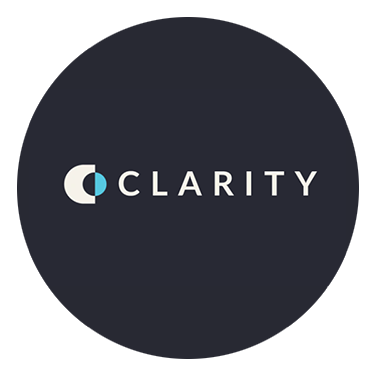Importance of Forecasting Using Last Year's Data
Jan 7, 2022 9:00:00 AM • Written by: Clarity Technologies

Ideally the time to forecast and create an operating budget is prior to the start of the new year; however, if you have not done so yet, it is not too late. If you can get it done by the middle of January or so, you will be in good shape for the coming year.
While forecasting can be a little bit confusing and there are many different models to follow, we are going to explain perhaps the simplest way to do so by taking historical data from the past year or two and using it to predict this year’s revenue.
But first, let’s define some key terms:
A forecast is a model showing the expected result of how your company will perform in the future. It becomes the roadmap for your businesses and provides a clear understanding of your predicted revenue potential based on facts collected that are believed to be true.
An operating budget uses your forecasted revenue as well as expenditures (not just expenses) over a set period of time.
Why is forecasting so important?
Creating a forecast is important for multiple reasons, including helping you decide in advance how your money will work for you and to get a real picture of your practices finances as you project them over the next 12 months.
For example, perhaps one of your top providers will be going on maternity leave from May to July. You need to be able to predict this and compensate for the lack of income for those months. Having a forecast can help you look toward the future and determine what your finances are going to look like so you can build your operating budget and set goals for your providers over the 12-month period.
So many times we ask practices if they have established goals, for the company overall and by provider. We often hear “No, we just increased it by X% over last year, or “We don't really know how.” It is vital for the sustainability and profitability of your business to take the time, understand your numbers, and develop goals. It is far more effective to be able to show your providers their monthly and annual goals. Then, sit down and talk with them about how you determined the goal; why you think it is achievable based on historical data; and assume then you will support them to hit this goal. At that point, you can discuss any vacations planned or time off that might affect the forecast. Again, that is why it is so important to forecast now right as the year has started. It’s also a great tool for conversations with all your stakeholders, providers, and your CPA/bookkeeper.
Your forecast basically becomes a roadmap that helps you to effectively strategize the growth of your practice. A forecast also helps avoid surprises. It allows you to deal with any potential cash flow crunches because you can predict them in the future. It helps you to be in control of your finances within your practice, which can be very comforting to know where you are going to be in June or September.
What information do you need to forecast?
As we mentioned before, there are many different models to use when forecasting and some assumptions you must make and some key information to know.
- Revenue per hour per service category.
- How many providers work in your practice and how many total hours they each have available to sell. For example, you have one nurse practitioner who is full time, and she has 2080 hours a year to sell. Then, you have a physician assistant who works two days a week and has 800 hours a year to sell. That would give you a total of 2,880 hours available to sell for that category of service.
- So, first you multiply your revenue per hour of each category of service by the number of hours you have available to sell. Revenue per Hour per category x maximum number of staffed resource hours = Revenue potential
- Then, multiply that by the number of resources or rooms you have. Look at each treatment room allocation for each service category. Basically, you’ll be taking each treatment room and analyzing the services done in that room and which category they fall under and what percentage of your sales occurred during the time you are benchmarking from the previous year. Maximum Revenue Potential = Revenue per Hour per category x maximum number of staffed resource hours x resources/rooms to sell
- Once you determine these numbers, you’ll want to compare them to some benchmarking data of how your practice performed over the past 12 months. This becomes your baseline for creating your forecast.
You can take these average benchmark sales and look at your current number of hours available to sell and determine whether you want to increase your prices to generate a higher revenue per hour so you can forecast say 10% more revenue in that category per month.
Other factors to consider when forecasting
When creating a forecast, you’ll also want to look at seasonality or the percentage each month of sales represented to the total for the year. For example, the first week or so of January are typically slower for most practices, as well as August and September at the end of summer when people are on vacation. This seasonality is consistent around the country. However, if you are in a resort area, your summers or winters may be great, but the rest of the year you are more dependent on the local population, so you need to know your practice’s seasonality (previous year’s gross monthly sales divided by annual gross sales).
Retail sales is another important benchmark to look at when you are forecasting. What percentage of retail sales are occurring each month in relation to service sales? This is an easy number to increase if you start to focus more on building long-term treatment plans, including prescribed at home care. So, a forecast can help you prioritize which areas you want to focus on increasing in the coming year.
If you don’t forecast and set goals, you are not going to have a roadmap of where you want to end up. You can blame the unexpected later, but we can plan on the expected right now. In fact, for every year we recommend stopping and doing a checkpoint every quarter.
Now more than ever it is important to keep as much cash reserves in the bank as possible for unpredicted concerns.
If you need assistance in building your forecast, remember the Clarity Technologies team is always here to help. Our goal is to ensure your highest level of success, efficiency and profitability.
If you are ready to take your practice to the next level, have greater expectations of your business and team, and are interested in learning how to create a forecast and budget but need additional financial training to do so, the Clarity Practice Performance System comprehensive financial training course can help. The built-in financial optimization calculators can help you simplify the process by easily determining the necessary financial information needed to create your forecast (Profit per Treatment, Revenue Per Hour, Cost of Goods, Service Categories, Cost of Labor and more).
Clarity Technologies
Clarity Technolgoies offers the world's first Practice Performance System. With a commitment to fostering growth and success for medical practices, we bring unparalleled expertise to the forefront. Through our articles, our team of experts share valuable insights, tips, and industry knowledge that will elevate your practice to new heights.
